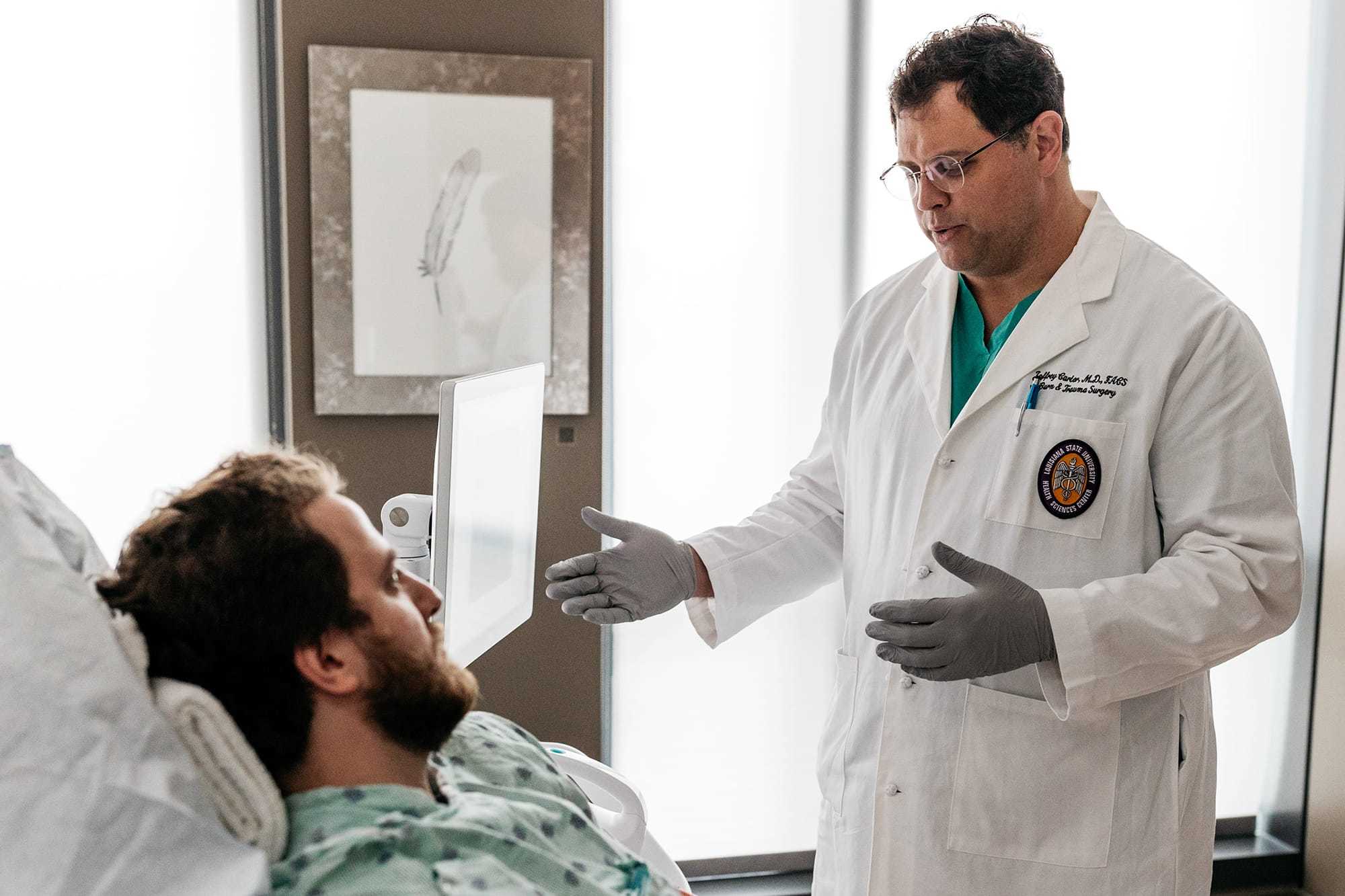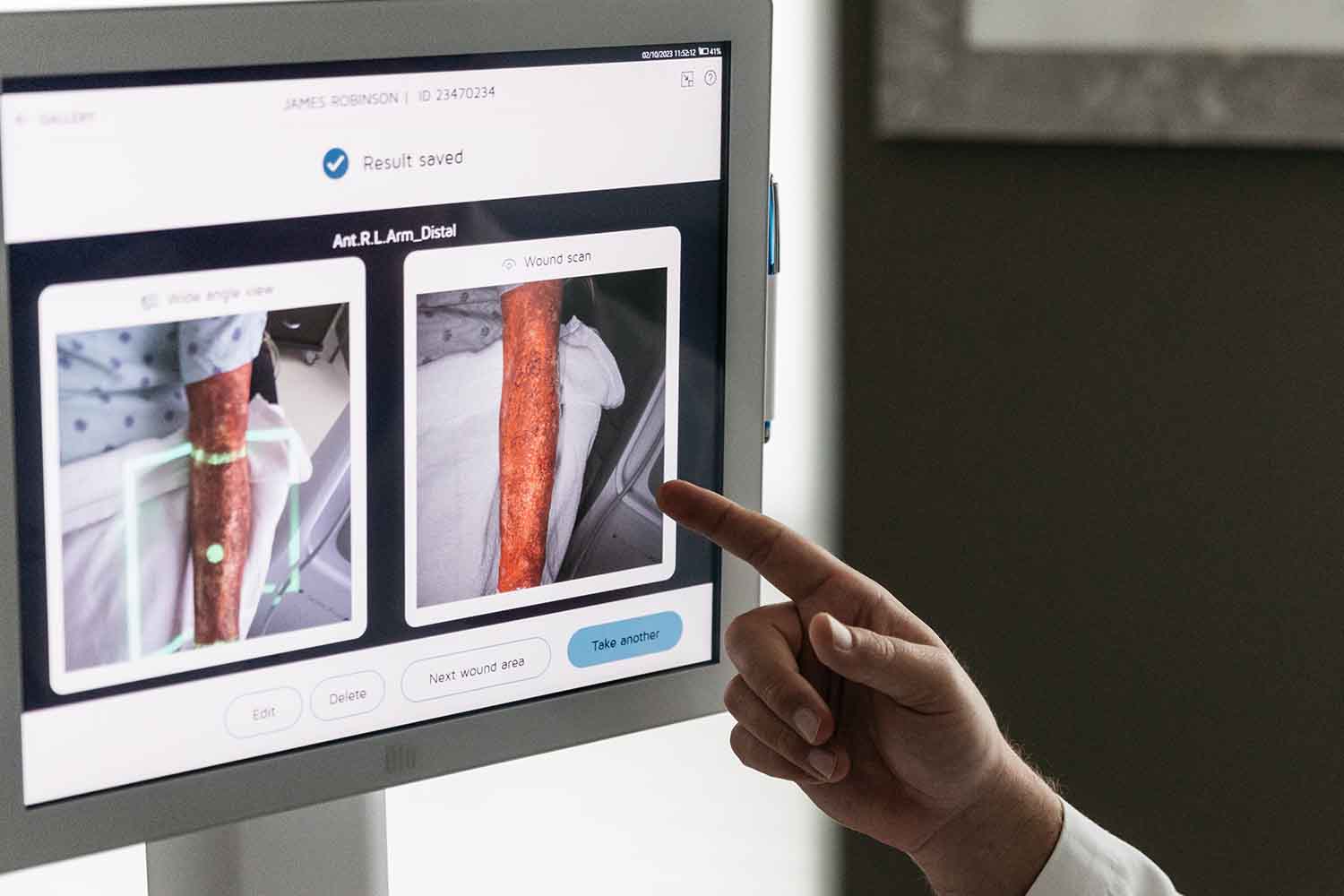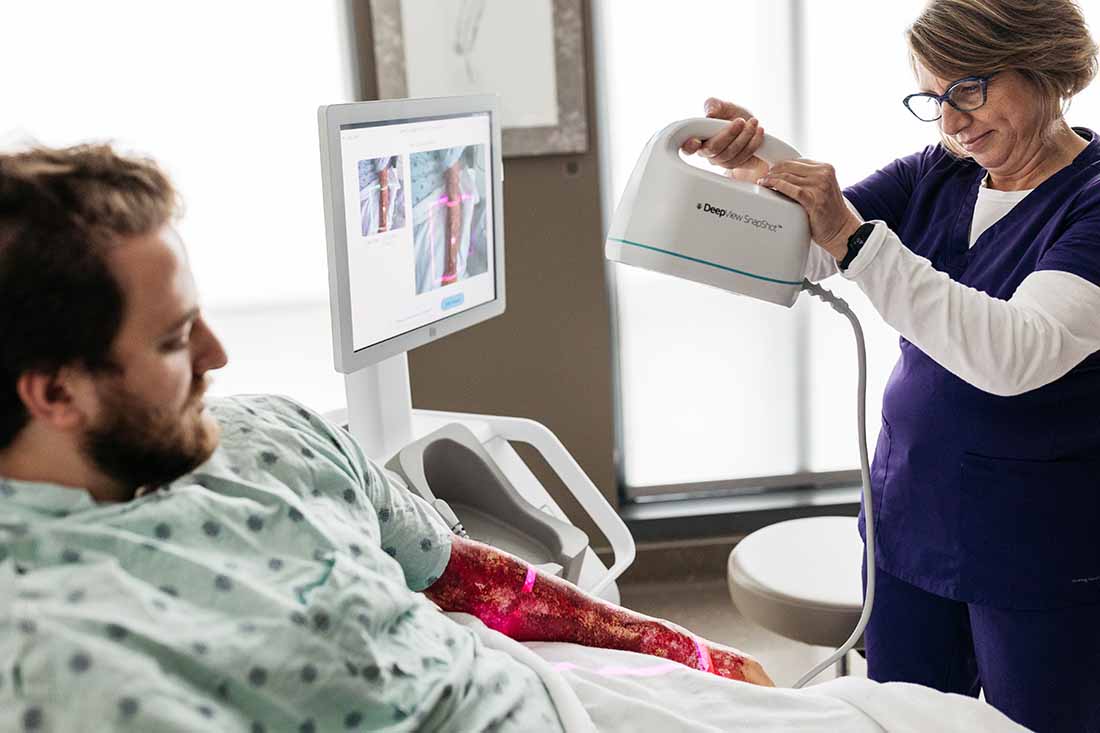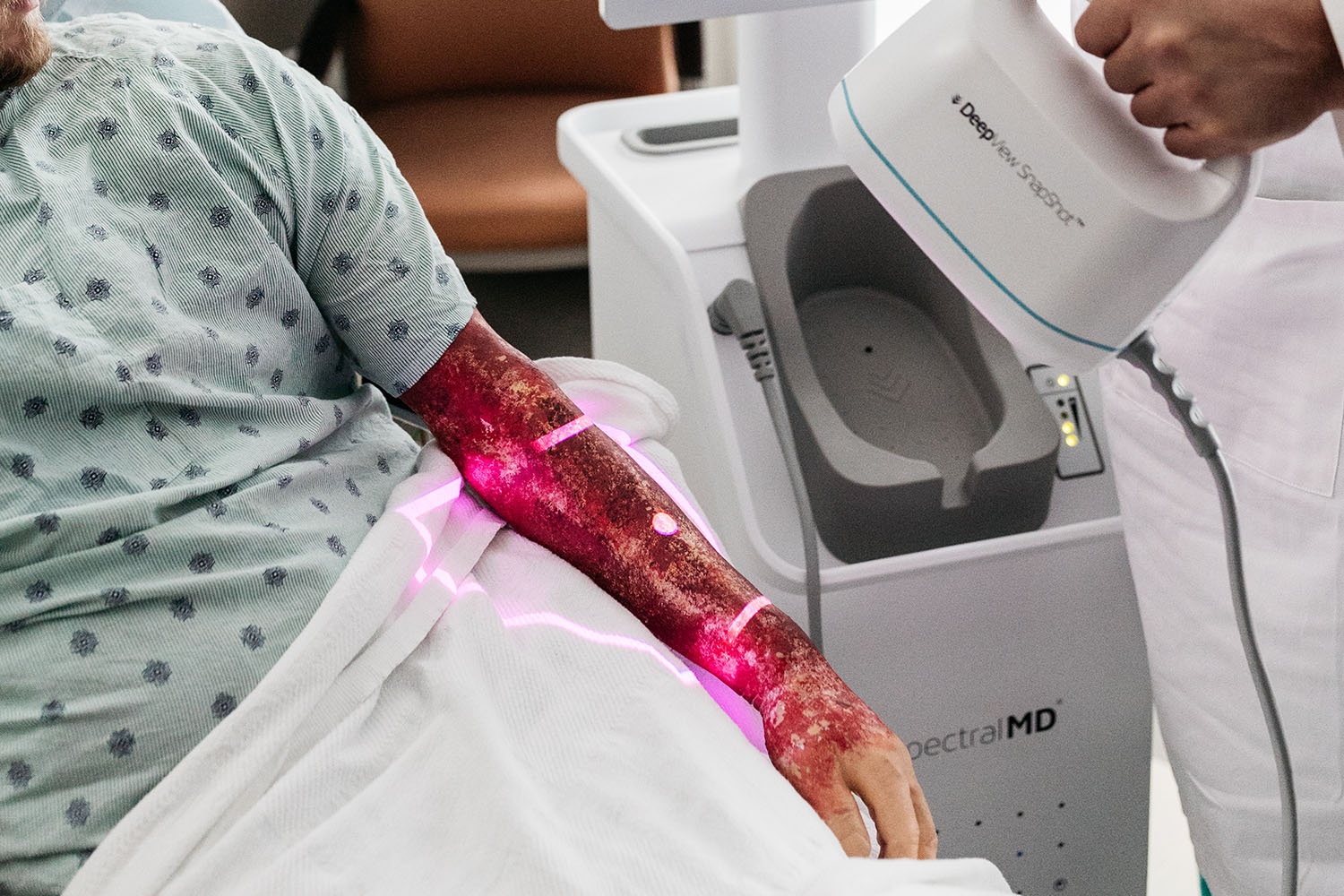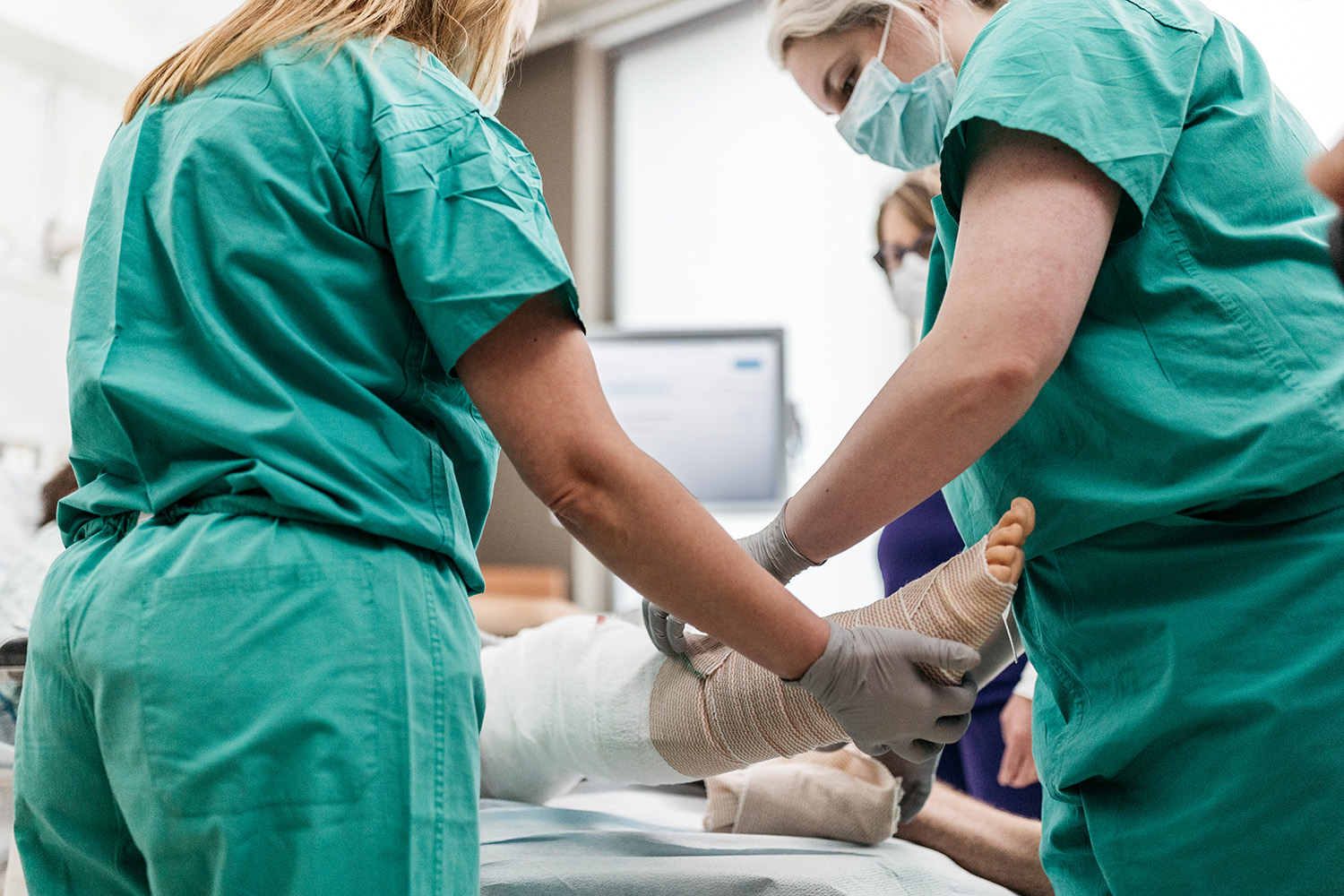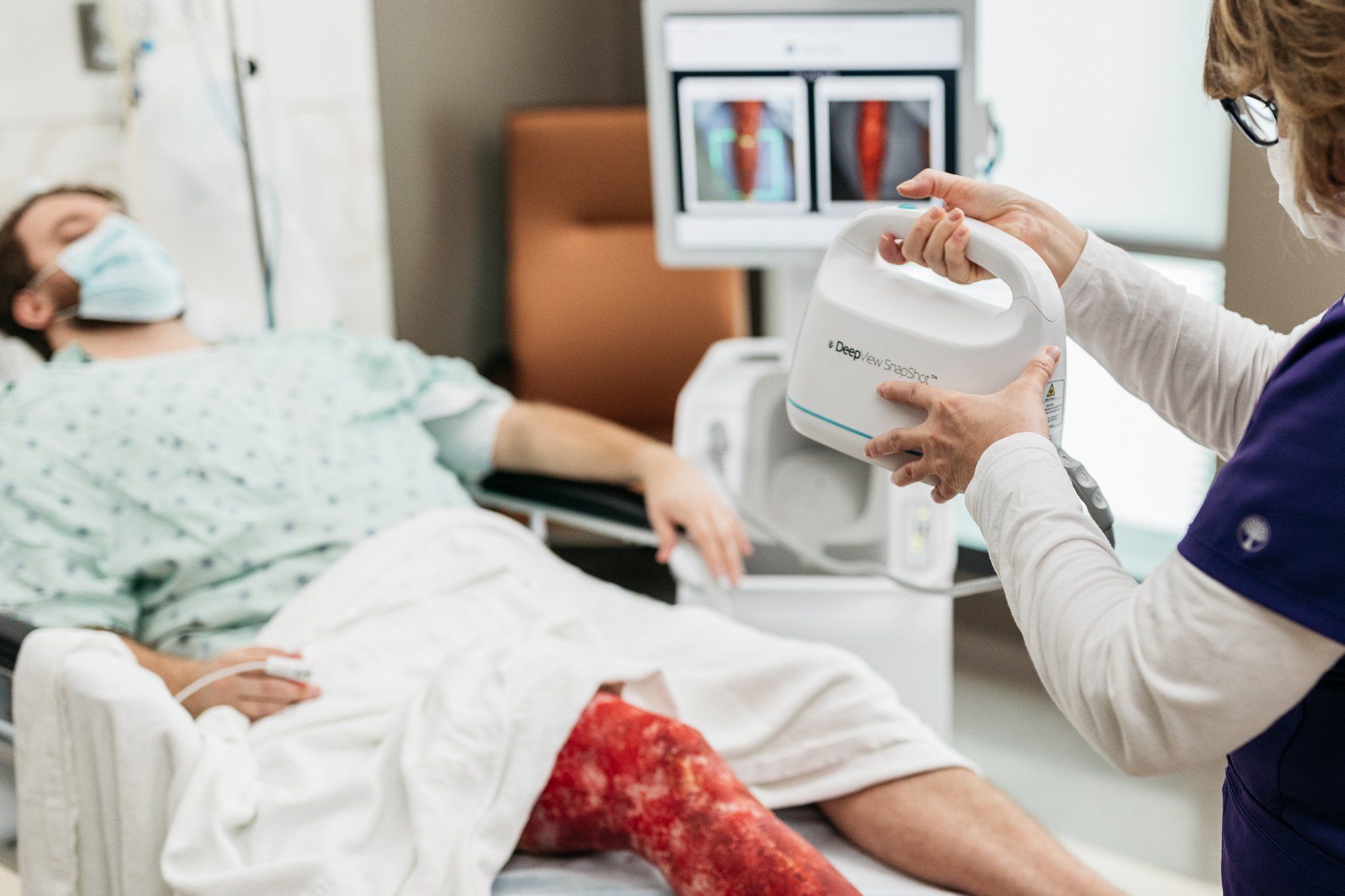Diabetic foot care management conferences often address the question of initiating adjunctive or advanced treatment options. This recurring topic typically brings up the ‘four-week rule’. For the purpose of these discussions, adjunctive or advanced therapies encompass active modalities like collagen, topical oxygen therapy, or leukopatch, distinct from ‘advanced dressings’ such as foam and hydrofiber used within the standard of care. The most common conclusion I’ve run across in these discussions is that if there isn’t a 50% area reduction of the diabetic foot wound after four weeks, the wound is not likely to heal within 12 weeks.
Understanding the Four-Week Rule for Diabetic Foot Care
Based on extensive literature, it has been consistently suggested that if the foot wound area fails to decrease by 50% after four weeks of standard care treatment—encompassing infection control, optimized perfusion, pressure offloading, and local wound care (IWGDF, 2023)—the likelihood of wound healing within 12 weeks diminishes significantly. This assertion is supported by Sheenan et al.’s (2003) study involving 203 patients, wherein subjects with a greater reduction in diabetic foot ulcer area within the initial four weeks exhibited a substantially higher 12-week healing rate of 58%, compared to those with lesser reduction, who demonstrated a healing rate of only 9% (P<0.01). The study underscores the pivotal role of early wound area reduction in predicting overall healing outcomes for patients with diabetic foot ulcers (Warriner, 2011).
Following any injury, the initial phase of healing involves lymphatic fluid and blood outpouring, achieving hemostasis. Platelet aggregation and vasoconstriction precede vasodilation, facilitating white cell influx. Inflammation ensues with chemotaxis, releasing mediators and cytokines. Platelet-derived growth factors promote collagen degradation, fibroblast transformation, and neovascularization. Neutrophils aid in phagocytosis, while fibroblasts synthesize collagen. By days 5-7, fibroblasts deposit new collagen and glycosaminoglycans, initiating reepithelialization and neovascularization. Wound maturation occurs over 3 weeks to 12 months, with collagen degradation, wound contraction, and scar formation, albeit with reduced tensile strength.
With this process, wounds generally heal in 4 to 6 weeks. Chronic wounds are those that fail to heal within this timeframe. Diabetes is one of the many systemic illnesses that can lead to impaired healing in wounds.
Rationale for the Four-Week Rule and Clinical Applications in Diabetes Treatment and Wound Care Management
Various studies corroborate the rule’s utility, influencing the adoption of adjunctive therapies like topical oxygen therapy and collagen for diabetic foot care treatment.
As Sheenan et al. (2003) articulated, the percentage change in foot ulcer area after four weeks is a reliable indicator of healing at 12 weeks, serving as a crucial clinical decision-making tool for diabetic foot ulcer (DFU) care. Approximately 60% of DFUs exhibit a 50% area reduction within four weeks, while the remaining 40% may require additional treatment. This ‘four-week’ rule is pivotal, guiding the incorporation of adjunctive therapies such as topical oxygen therapy, collagen, and topical hemoglobin spray into treatment algorithms (Warriner et al., 2011; Frykberg et al., 2023; Fletcher et al., 2020; Chadwick et al., 2015).
Insurance companies in the US utilize the ‘four-week rule’ to determine when adjunctive therapies are necessary for wounds not achieving 50% healing. The IWGDF (2023) offers supportive recommendations for diabetic foot ulcer treatment, including various advanced therapies like negative pressure wound therapy, placental-derived products, autologous leucocyte/platelet/fibrin patches, hyperbaric oxygen, and topical oxygen therapy. These interventions are advised when standard care alone is insufficient, although specific time frames are not provided. The four-week rule aims to evaluate patient healing progress through a systematic wound and foot examination and assess treatment protocol effectiveness.
In the UK, there are challenges in objective wound measurement. Clinicians often rely on rudimentary foot care assessment methods, like ruler measurements, if any measurement is done at all. Data indicates that clinicians often change dressing regimens without probing into the underlying cause of non-healing wounds when reassessing them at four weeks. It’s imperative to conduct thorough wound reassessment to maximize healing potential. If standard care has been fully optimized, clinicians should consider adjunctive therapy rather than merely switching dressing technologies. National Diabetic Foot audit data (NHS Digital, 2023) indicate persistent diabetic foot ulcer prevalence above 40% at week 12 despite initial expert assessment and standard care, highlighting the need for improved examination and treatment strategies.
Furthermore, 61% of severe ulcers remain unhealed at 12 weeks (Figure 2). Ulcer severity is assessed using the SINBAD score, which considers variables such as site, ischemia, neuropathy, bacterial infection, and depth. This scoring system is valuable for predicting ulcer severity and outcome, with scores of 0-2 indicating less severity and 3 or more indicating higher severity.
More about Deepview
Learn more about our DeepView® technology
Request a Demo
Looking to learn more about DeepView® technology, or eager to see it in action?
Potential Impact on the Treatment of Diabetes and Foot Wounds
According to the Centers for Disease Control and Prevention (CDC), a 2020 study found approximately 34.2 million people in the United States have diabetes, which represents about 10.5% of the total population. In the United Kingdom (circa 2020), Diabetes UK reports that there are about 4.9 million people diagnosed with diabetes, including both Type 1 and Type 2 diabetes.
Approximately 25% of individuals with diabetes develop foot complications during their lifetime, with diabetic foot ulcers (DFUs) affecting around 15% of diabetic patients.
Diabetes is the leading cause of non-traumatic lower limb amputations worldwide, and approximately 85% of all amputations in diabetic patients are preceded by foot ulcers. Patients with diabetes who develop foot ulcers face a significantly higher mortality rate compared to those without ulcers, with mortality rates at five years post-ulceration reaching up to 50%. The recurrence rate for diabetic foot ulcers is high, with up to 40% of patients experiencing a recurrent ulcer within one year of initial healing.
The economic burden associated with diabetic foot complications is substantial, with annual costs for diabetic foot ulcers and amputations totaling billions of dollars globally.
A Clear Call to Action for Diabetic Foot Care Management and Treatment
Based on both personal discussions and literature evidence, it becomes evident that we might indeed be failing our patients with the four-week rule. Time is a critical factor for DFU patients, and despite our objective wound assessments, urgency in their care is paramount. We must make critical decisions regarding the application of advanced technologies when standard care fails to yield results, prioritizing the patient’s well-being.
Implementing the four-week rule in all patient journeys could potentially reduce the number of unhealed ulcers. Early identification of non-healing DFUs through this rule could significantly improve patient outcomes, as open wounds increase the risk of infection, hospitalization, and potential amputation. Timely intervention is crucial in wound healing, especially in severe ulcers, which are at higher risk of complications if left unhealed by 12 weeks (NHS Digital, 2023).
Implementing several minor changes can lead to significant improvements in practice:
Ensure accurate wound measurements, acknowledging the limitations of simple rulers and considering the adoption of more precise measurement systems over time.
- Incorporate the four-week rule into routine practice, initiating wound assessments upon presentation and reevaluating at the four-week mark.
- Conduct a simple four-week progress check, supplementing regular reviews and assessments to serve as a formal progress indicator.
- Reassess all current treatments if the wound area hasn’t reduced by 50% at the four-week mark, considering the utilization of adjunctive technologies.
- In addition, podiatists and clinicians need to focus on educating patients and emphasizing the need for daily examination and care for their feet. This involves checking the feet for any cuts, sores, blisters, or signs of infection, as individuals with diabetes are at higher risk of developing foot complications. Proper foot hygiene, wearing comfortable and properly fitting shoes, and keeping the feet moisturized are also essential aspects of diabetic foot care. Regular visits to a healthcare provider for foot exams and prompt treatment of any foot issues are crucial in preventing serious complications.
Remember, significant change often stems from incremental progress rather than sudden shifts. Focus on making small but impactful improvements, as progress is achieved step by step and we work together to bring better care management to diabetic foot ulcers.
Embracing the four-week rule as a pivotal milestone in diabetic foot care management can enhance patient care and mitigate the risk of prolonged wound healing. Incremental changes in clinical practice can yield significant improvements in patient outcomes and treatment efficacy.
References
- Wallace Heather A, Basehore Brandon M, Zito Patrick M (2023) Wound Healing Phases. Stat Pearls
- https://www.ncbi.nlm.nih.gov/books/NBK470443/#:~:text=Wounds%20generally%20heal%20in%204,response%2C%20and%20collagen%20synthesis%20defects.
- National Diabetes Statistics Report 2020: https://www.cdc.gov/diabetes/data/statistics-report/index.html
- Chadwick P, McCardle J, Mohamud L et al (2015) Appropriate use of topical haemoglobin in chronic wound management: consensus recommendations. The Diabetic Foot Journal 18(3): 142–6
- Fletcher J, Dhoonmoon L, Chadwick P et al (2020) Use of oxidised regenerated cellulose (ORC) and collagen dressings (PROMOGRAN Prote-ase Modulating Matrix and PROMOGRAN PRISMA Wound Balancing Matrix) to kick-start the treatment of chronic wounds. The Diabetic Foot Journal 23(1):62–9
- Frykberg R, Andersen C, Chadwick P et al (2023) Use of topical oxygen therapy in wound healing. J Wound Care 32(S8B):S3–S30. https://doi.org/10.12968/jowc.2023.32.sup8b.s1
- Guest JF, Ayoub N, McIlwraith T et al (2015) Health economic burden that wounds impose on the National Health Service in the UK. BMJ Open 5:e009283. https://doi.org/10.1136/bmjopen-2015-009283
- Guest JF, Ayoub N, Mcilwraith T et al (2017) Health economic burden that different wound types impose on the UK’s National Health Service. Int Wound J 14(2):322–30. https://doi.org/10.1111/iwj.12603
- Guest JF, Fuller GW, Vowden P (2020) Cohort study evaluating the burden of wounds to the UK’s National Health Service in 2017/2018: update from 2012/2013. BMJ Open 10(12):e045253. https://doi.org/10.1136/bmjopen-2020-045253
- Ince P , Abbas G, Lutale JK et al (2008) Use of the SINBAD classification system and score in comparing outcome of foot ulcer management on three continents. Diabetes Care 31(5):964–7. doi: 10.2337/dc07-2367
- International Working Group on the Diabetic Foot (IWGDF 2023) Guidelines (2023 update) – IWGDF Guidelines
- NHS Digital (2023) National Diabetes Foot Care Audit. https://tinyurl.com/53ew9z4y
- Sheenan P, Jones P et al (2003) Percent change in wound area of diabetic foot ulcers over a 4-week period is a robust predictor of complete healing in a 12-week prospective trial. Diabetes Care 26(6):1879–82 https://doi.org/10.2337/diacare.26.6.1879
- Warriner R, Snyder RJ, Cardinal MH et al (2011) Differentiating diabetic foot ulcers that are unlikely to heal by 12 weeks following achieving 50%percent area reduction at 4 weeks. Int Wound J 8(6):632–7. https://doi.org/10.1111/j.1742-481x.2011.00860.x
